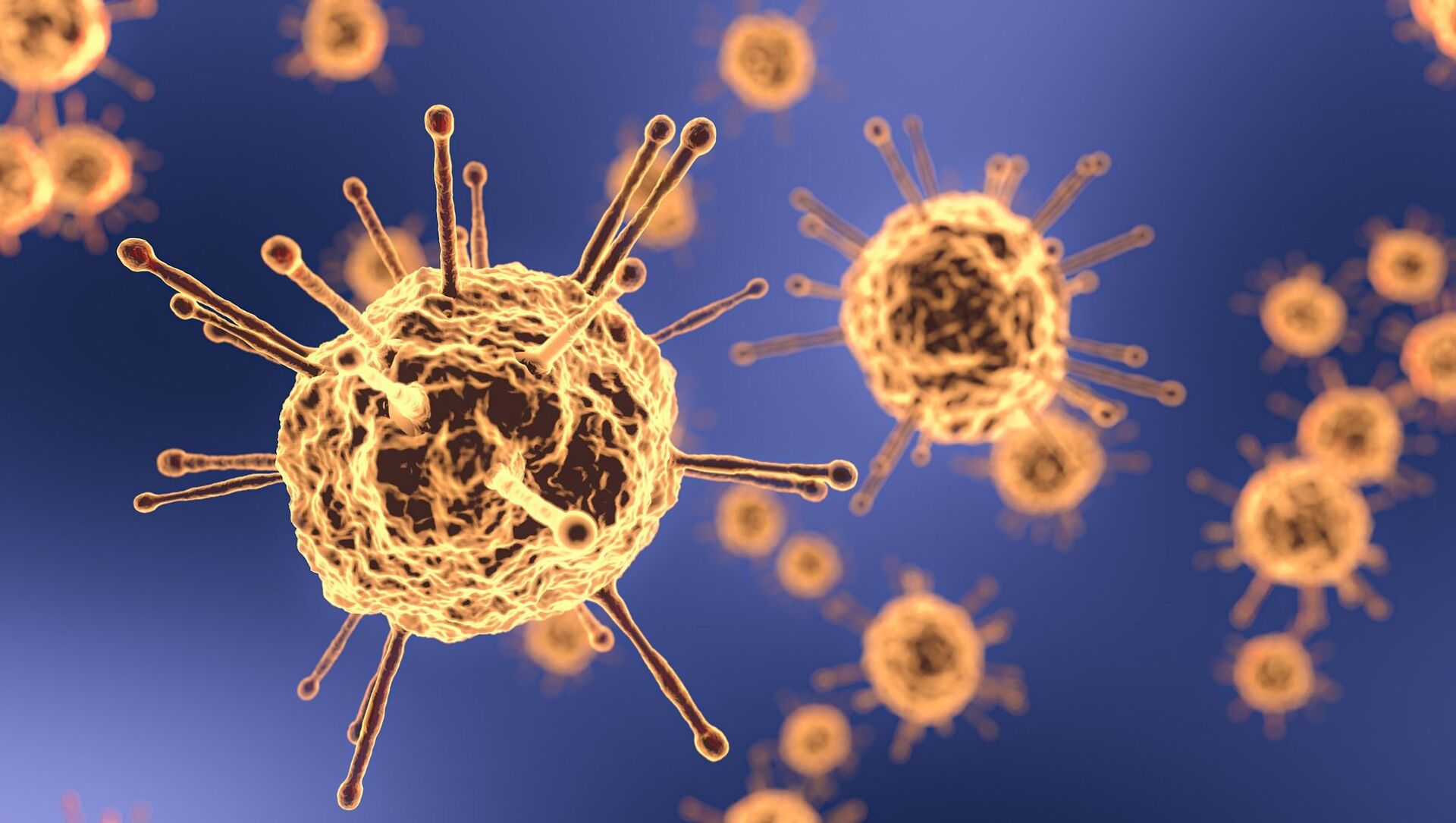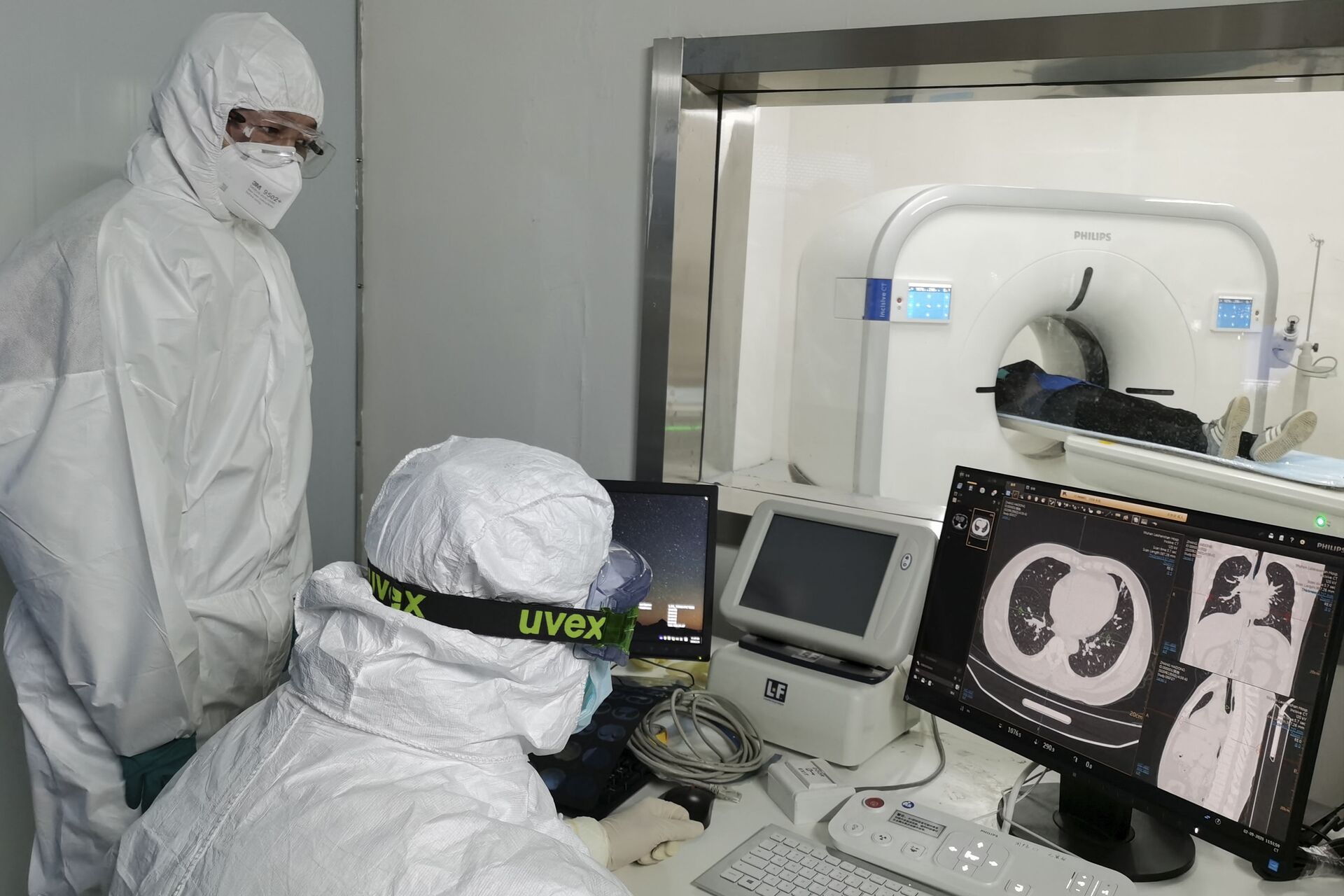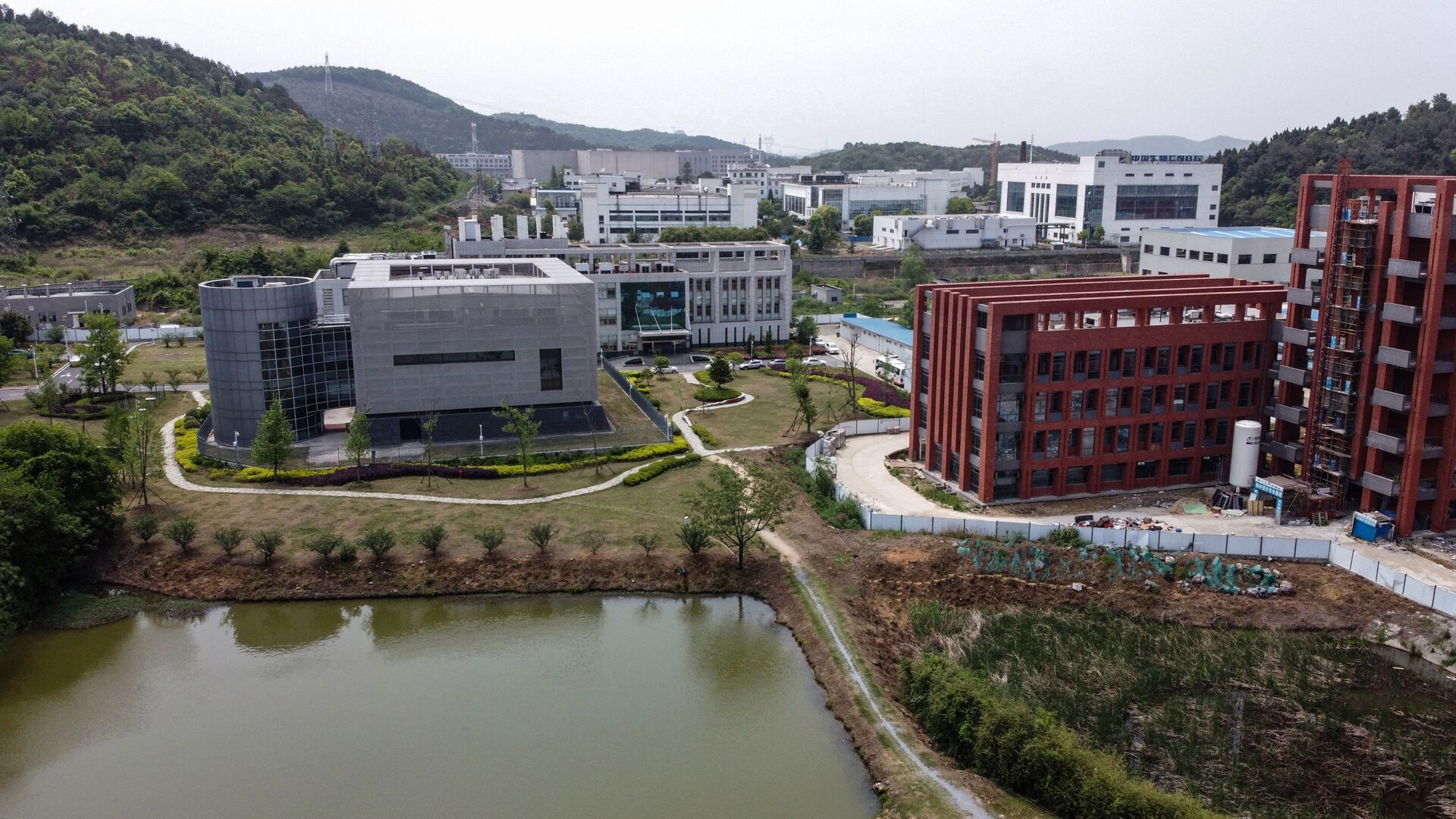US Intelligence Releases Report on COVID-19 Origins, Says Outbreak Was Natural, Not a Bioweapon
19:37 GMT 27.08.2021 (Updated: 21:33 GMT 27.08.2021)

CC0 / /
Subscribe
The US intelligence community (IC) has released a brief, unclassified summary of its probe into the origins of COVID-19, saying the virus was unknown to the Chinese government prior to the outbreak in Hubei in late 2019.
"The IC assesses that SARS-CoV-2, the virus that causes COVID-19, probably emerged and infected humans through an initial small-scale exposure that occurred no later than November 2019 with the first known cluster of COVID-19 cases arising in Wuhan, China, in December 2019," the Office of the Director of National Intelligence said in the report released on Friday.
"In addition, the IC was able to reach broad agreement on several other key issues. We judge the virus was not developed as a biological weapon. Most agencies also assess with low confidence that SARS-CoV-2 probably was not genetically engineered; however, two agencies believe there was not sufficient evidence to make an assessment either way. Finally, the IC assesses China's officials did not have foreknowledge of the virus before the initial outbreak of COVID-19 emerged," the report continues.
Turning to the various hypotheses about how that initial exposure happened, the ODNI noted that both natural exposure and a laboratory-associated incident "are plausible."
Four IC elements and the National Intelligence Council assessed with low confidence that the virus made the jump to humans by natural exposure to an animal infected with either SARS-CoV-2 or a virus almost identical to it.
One IC element assessed with moderate confidence that exposure "was the result of a laboratory-associated incident, probably involving experimentation, animal handling, or sampling by the Wuhan Institute of Virology."
The report also notes that three IC elements said they lacked the necessary information to draw any type of conclusion.

In this Sunday, Feb. 9, 2020, photo released by Xinhua News Agency, doctors scan a patient's lungs at Huoshenshan temporary hospital built for patients diagnosed with coronavirus in Wuhan in central China's Hubei province. Mainland China has reported another rise in cases of the new virus after a sharp decline the previous day, while the number of deaths grow over 900, with at least two more outside the country. (Gao Xiang/Xinhua via AP)
© AP Photo / Gao Xiang
"China's cooperation most likely would be needed to reach a conclusive assessment of the origins of COVID-19," the report concludes. "Beijing, however, continues to hinder the global investigation, resist sharing information and blame other countries, including the United States. These actions reflect, in part, China's government's own uncertainty about where an investigation could lead as well as its frustration the international community is using the issue to exert political pressure on China."
In a statement accompanying release of the report, the White House said that China has "critical information" it has "worked to prevent international investigators and members of the global public health community" from accessing from the beginning. "To this day, the PRC continues to reject calls for transparency and withhold information, even as the toll of this pandemic continue to rise," it adds.
"The world deserves answers, and I will not rest until we get them. Responsible nations do not shirk these kinds of responsibilities to the rest of the world," the statement said.
WHO's Wuhan Team Says No Data Barriers in China
Earlier this week, the 12-person team assembled by the World Health Organization (WHO) to travel to Wuhan and explore the origins of SARS-CoV-2 by sharing information with Chinese colleagues published an article in Nature that, in part, aimed to set the record straight about their report. They note that, in contrast to the widely reported claim that their Chinese counterparts had withheld information from them, "much new information was shared by the Chinese team as a result of the agreed studies, and that even more was shared as part of the iterative process between the international and Chinese teams."
The WHO scientists further noted that in exploring the lab leak theory, which was not part of their original mandate, their Chinese colleagues refused to share raw data on 174 cases due to legal barriers associated with patient confidentiality that "could not be addressed in the short time frame of our visit."
"By then, it was clear that the 174 cases were not likely to be the earliest ones, so we considered them less urgent for understanding origins," they noted. "It was therefore agreed that a second phase of studies would address these concerns and review these data."
Their report, published in March 2021, found high likelihood of either a direct or indirect zoonotic transfer of the virus from animals into humans, and a very low likelihood it had been a leak from the Wuhan virology lab. They also highlighted the possibility that a massive international military sports competition in October 2019 was worth exploring as an additional vector.

An aerial view shows the P4 laboratory (L) at the Wuhan Institute of Virology in Wuhan in China's central Hubei province on April 17, 2020
© AFP 2023 / HECTOR RETAMAL
Lab Leak Theory Long Discredited
As Sputnik has reported, the suggestion that an outbreak at the Wuhan Institute of Virology caused the COVID-19 outbreak in Wuhan, and thus the global pandemic, began as a conspiracy theory in far-right circles in early 2020. Pushed by former Donald Trump chief ideologue Steve Bannon, the New York Times dismissed it at the time as a "fringe theory" pushed by "those who see China as a threat."
However, after the outbreak spread to the US, killed more than 100,000 Americans and gutted the US economy in the span of a few weeks, then-President Trump began repeating the theory as a way to deflect blame from his administration's failures, calling it the "China Virus" and "Kung Flu" - attitudes blamed in part for a stark rise in racist attacks against Asians and Asian-Americans in 2020 and 2021.
The heinous nature of Trump's statement prompted the ODNI to issue a rare public comment, saying on April 30, 2020, that "the Intelligence Community also concurs with the wide scientific consensus that the COVID-19 virus was not man-made or genetically modified."
By the time the WHO team arrived in China for its study in January 2021, the Associated Press had reintroduced the lab leak theory in an attempt to craft a new narrative of Chinese coyness on sharing early COVID-19 data. With new air under its wings, the theory soon began to be pushed on the front page of the Wall Street Journal, and Biden in late May ordered US intelligence to take 90 days and draw up the report released on Friday about the outbreak's origins. At that time, the many US intelligence agencies were broadly split as to whether it came to humans via animal contact or from a lab leak of some type.
In response to the persistent demands for China to open the Wuhan biolab to a total investigation of the virus' origins, Chinese media began arguing that if Chinese biolabs are going to be investigated, so should American biolabs, starting with Maryland's Fort Detrick, home of the US Army Medical Research Institute of Infectious Diseases, holder of some of the world's deadliest pathogens, where several prominent leaks have occurred in the past.

